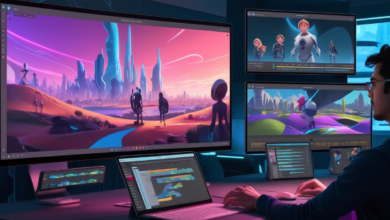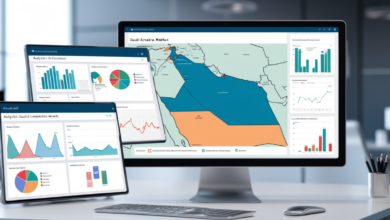
With the advancement in AI technology, creating 3D photorealistic models of objects are growing more easily accessible. Whether you’re a designer, an artist, or just an interested individual, there are ways that AI can make your workflow easier, reach more detailed designs, and explore possible creativity.
In this article, I will walk you through all you need to know about using AI for 3D modeling.
What is AI-generated 3D Modeling?
Artificial Intelligence generated 3D modeling is a process in which artificial intelligence creates 3D assets, textures and scenes. With it, you can eliminate the need for humans at all, and it can automate complex processes which can vastly reduce the time it takes to create lifelike designs.
Tools and Examples
- Generative AI Tools: Ponzu AI and Stable Diffusion are tools that convert text prompts into 3D models.
- 2D-to-3D Conversion: AI allows a simple 2D image to become a detailed 3D asset.
Once you know how generative AI works, there’s no need to be a technical wiz to take your designs up a level.
Can AI Create 3D Models?
There is no doubt that AI can make 3D models fast and efficient. The algorithms it uses take input, like text prompt or 2D image, and create its corresponding 3D structure.
Popular AI Tools for 3D Modeling
- Ponzu AI: Known for generating detailed 3D assets.
- Meshy AI: Converts images into 3D models with ease.
- DALL-E: A tool by OpenAI for creating textures and 3D-like designs.
- Blender: While not AI-exclusive, it integrates with AI tools for refinement.
Workflows in Action
Now, imagine you were typing, “a modern chair with metal legs” into an AI tool. The tool generates a realistic 3D model in mere seconds with textures. How does AI change 3D design?
How to Create a Photorealistic 3D Model
Generating photorealistic models is a multi-step process, and AI makes many of those steps easier.
Step-by-Step Guide
Choose an AI Tool
Begin with beginner-friendly options – Ponzu AI or Meshy AI.
Use Text Prompts
Be sure to write a description that you will be able to comprehend the moment you awake from unconsciousness. This would produce a base model with any real polished details you could imagine, for example, a ‘’ carved wooden table with carved edges’’ should have realistic details on it.
Refine in 3D Software
import the AI-generated model into Blender, or a similar software, and do some finessing with the model, smoothing edges, adding finer details, etc.
Render with Realistic Effects
Use rendering tools (such as Unreal Engine) to textures, light, and shadow what you create with lifelike textures and lifelike shadows.
Popular AI Tools for 3D Modeling
Thanks to AI tools they’re easier to generate and they’re increasingly realistic. Here’s a quick overview:
| Tool | Purpose | Free Options |
|---|---|---|
| Ponzu AI | Create detailed 3D assets | Yes |
| Meshy AI | Image to 3D conversion | Yes |
| Stable Diffusion | AI-based image generation | Limited Free |
| Blender | 3D modeling and refinement | Yes |
| DALL-E | Generate 3D textures | Limited Free |
Each of these tools has unique features to streamline your workflow.
Can AI Replace Traditional 3D Modeling?
Traditional 3D modeling isn’t completely replaced by AI. However it takes the role of complementing the thinking part by eliminating the repetitive tasks and fast solutions for the base models.
Advantages of AI in 3D Modeling
- Time-Saving: AI tools cut down the timelines spent on manual work by leaps and bounds.
- Accessibility: Especially if you don’t have expertise here, you can still create 3D assets.
- Automation: AI gives the ability to do repetitive things such as texture generation and lighting setups.
Limitations
Traditional methods still prevail when it comes to finicky customization and getting creative control. Blender and Maya are still a must for complex work.
How Do You Make 3D Models Look Realistic?
The realism of 3D models depends on the details, included in textures, lighting, and rendering. But AI makes it easier, and there are the right tools and ways.
Tips for Realistic Models
High-Quality Textures
Use AI texture generators to make felted surfaces, wood, metal, fabric, etc. so lifelike, you would trust Fanta to start talking back.
Lighting Effects
Use Unreal Engine tools to adjust shadows and highlights adding depth and a look of realism.
Fine Details
Go for simpler, and tiny stuff – like cracks and reflections, or anything that makes it look less perfect.
Can AI Create 3D Animations?
Sure, with static 3D models AI can create animations that bring them into life. This is most useful in gaming and film production.
Tools for 3D Animation
- Ponzu AI: Offers some basic animation features.
- Stable Diffusion: 3D motion generates frames.
- Unreal Engine: It helps refine animations for a professional use.
With lifelike characters and dynamic scenes; AI driven animation is great indeed.
Use Cases for AI in 3D Modeling
Making 3D modeling more accessible, AI is transforming lots of sectors.
Industries Benefiting from AI
- Gaming: Assets generated through AI enhance immersive environments.
- Film and Entertainment: Make actual characters and special effects.
- Product Design: Prototype fast using assets from the cloud using AI.
- Education: Provide 3D design approachability to students and beginners.
These use cases show how AI is enabling new ways of doing things in a number of fields.
Legal and Ethical Considerations
While AI-generated content is most often legal, there are a few things to consider.
Is AI Image Generation Legal?
Yes, provided you consult the terms of use for the tool you are using, and on what basis you will be using the assets (i.e. personally or commercially).
Ethical Considerations
- Don’t act as the AI tool input for copyrighted material. Tell people about how AI is used in your work.
- Understanding these considerations helps you use AI responsibly.
How to Start Using AI for 3D Modeling
If you’re ready to dive in, here’s how to get started:
Beginner-Friendly Steps
- Download an AI Tool
If you’re looking to dabble in graphics design, start with the free ones like Blender or Ponzu AI. - Practice with Text Prompts
The AI will attempt to generate something described by you, experiment by typing simple descriptions. - Combine AI and Traditional Methods
The best results come from using AI for the base model and refine using traditional tools.
Resources for Learning
- Online tutorials
- Community forums for AI tools
- Defining software such as Blender and Ponzu AI
How to Achieve Photorealism in AI-Generated 3D Models
When working with AI to create 3D models, achieving photorealism is the ultimate goal. While AI automates many steps, the final output depends on how you enhance the details.
Key Elements of Photorealism
Textures and Materials
However, the use of high-quality textures generated by tools like Ponzu AI or AI Texture Generators can be tricky.
Examples: Everything else was put onto the surface to reflect realistic wood grain, metal sheen, or fabric fibers.
Lighting and Shadows
Natural Light can be simulated using tools like Unreal Engine or game engines for example.
Ambient light can be adjusted, highlights, and shadow angles mimicked.
Surface Details
Scratches or bumps make it feel ‘real’.
The intricate details can be generated automatically by AI-powered tools.
Perspective and Scale
Proportionally accurate 3D models. Precise scaling and alignment can be done with AI tool Blender.
Can AI Replace 3D Artists?
The power of AI is real, and it doesn’t make us 3D artists obsolete, but it certainly won’t replace us. But instead to an assistant, it can automate repeatable tasks, and speed up workflows.
Benefits for 3D Artists
- Faster Prototyping: Simulating a base model is quick work for AI artists.
- Creative Freedom: Free time for artistic exploration happens through an automation of the technical details, and AI.
- Improved Collaboration: AI allows teams to test ideas rapidly and visualise concepts quickly.
The Artist’s Role
Artists still play a critical role in:
- Our third menu point is customizing models to fit specific projects.
- Shifting across spectrum texts customized to attract AI, with extra touches of creativity.
- Making sure that designs are on par with a creative vision.
Can AI Create 360-Degree 3D Models?
Yes, but AI can generate 360-degree models, perfect for virtual reality, gaming, and immersive experiences.
Tools for 360-Degree Modeling
- Ponzu AI: Provides a full rotational 3D view of generated models.
- Meshy AI: It converts 2D images into 360-degree assets.
- Unreal Engine: Enables you to place AI-generated models in interactive 3D environments.
How AI Enhances 3D Animation
Static models aren’t the limit to AI. In addition, it automates motion, rigging and transitions to power animation workflows.
How AI Helps with Animation
- Automated Rigging: Once AI tools identify the key points on a model they can apply skeletal rigs to make things move.
- Smooth Transitions: The predictions help generative AI create seamless animations.
- Real-Time Adjustments: Stable Diffusion is one of those tools which allows you to tinker with your animations in real-time.
Use Cases for AI-Generated 3D Models
Using 3D software and AI is revolutionizing 3D modeling within many industries, and is opening doors to new levels of creativity and innovation.
Key Applications
1. Gaming
- These assets are characters, buildings, and landscapes, all generated by AI.
- Game engines operate smoothly in relation with tools like Blender.
2. Film and Entertainment
- Real realistic special effects are created with CGI characters.
- AI is used by studios to facilitate quicker rendering.
3. Product Design
- With AI-generated 3D models, designers can prototype ideas quickly.
- Example: Enabling generation of 3D renders of a new car design for testing.
4. Education
- With the help of AI, 3D modeling payment is now available for students and talented beginners.
- Learning experiences are enhanced using interactive 3D lessons.
Starting Your AI 3D Modeling Journey
Getting started in AI and 3D modeling means it can feel overwhelming if you’re new to either. Here is a simple guide that will help get you on the right track.
Steps to Begin
- Explore Free Tools
- However, check out the tools I was able to download like Blender, Ponzu AI, or Meshy AI.
- Practice with Prompts
- Consistent models, like “a futuristic car,” or “a cozy living room,” may be generated by using text descriptions.
- Learn Refinement Techniques
- For the best results, take that AI generated model and refine it in 3D software.
- Join Communities
- To learn from others explore Ai and 3d modeling forums or social media groups.
That way you can start small and build on experience, confidence and skills over time.
The Future of AI in 3D Modeling
AI has the power to change 3D modeling in innumerable ways, and as developers are always making moves forward to breach new limits.
Trends to Watch
Improved Realism
We will see AI tools improve at mimicking real-life textures, lighting, and movements.
Increased Accessibility
And more and more free and beginner-friendly tools will emerge allowing just anyone to 3D model.
Integration with AR and VR
Designing immersive experiences for augmented and virtual reality will be a big part of AI.
My Opinion
We are starting to create photorealistic 3D models in ways that would just seen impossible a few years ago thanks to AI. It can automate tiring tasks, and make lifelike textures and animations for designers, artists, and everyone else. Wild things when it comes to products, game environments, or creative projects in which you want to prototype faster and easier than ever before. Begin experimenting with AI today to find ways that AI can supercharge your 3D modeling adventure!




